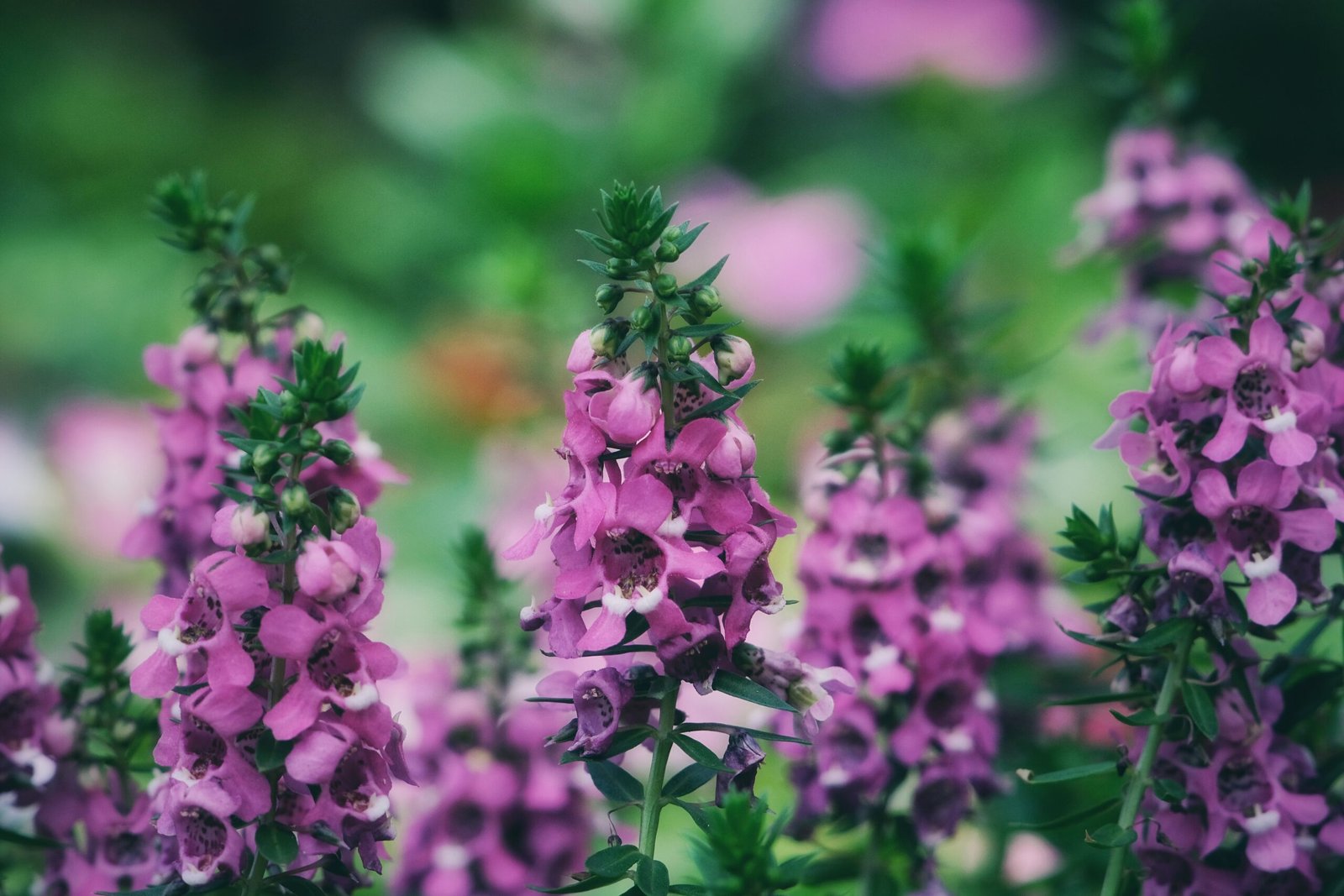- Lotus: How to Plant, Grow and Care for Lotus - 3 November 2023
- Zinnia: How to Plant, Grow and Care for Zinnia - 3 November 2023
- Coreopsis: How to Plant, Grow and Care for Coreopsis - 3 November 2023
Angelonia is a perennial flowering plant native to Central and South America. They are often called summer snapdragons for their similar appearance. These plants are heat-tolerant and prefer full sun and well-drained soil.
Angelonia, often known as summer snapdragon, is a vibrant and enduring plant that comes in different types like Angelonia Angelface Blue, Angelonia Angelface Wedgwood Blue, and Angelonia Serena Purple.
Life Cycle
The life cycle of Angelonia is typically perennial, meaning it can live for more than two years, experiencing blooming and seeding times throughout its life cycle.
Bloom Season
Angelonia’s bloom season is from late spring to fall, providing an extended bloom time that adds color to your garden for a significant part of the year.
Characteristics
Characteristics of the Angelonia plant include its ability to attract bees, butterflies, and hummingbirds due to its vivid colors and fragrant nature. The plant is also easy to grow and maintain, making it a popular choice for many gardeners. However, it’s not edible but is often used as an ornamental plant due to its fast-growing and aesthetically pleasing nature.
Growing Conditions
The Angelonia plant thrives in growing conditions that include full sun exposure and well-drained soil. It is fairly drought-tolerant and can handle a little bit of shade but performs best in warmer climates.
Pest Resistance
The plant exhibits resistance to deer, making it an excellent choice for regions where deer are common. However, it doesn’t show significant resistance to other common garden pests or diseases like rust, fusarium wilt, downy mildew, or powdery mildew.
| Season | Depth | Height | Spacing | US Hardiness Zone |
|---|---|---|---|---|
| Spring/Early Summer | 10-12 inches | 18-24 inches | 6-8 inches | USDA Hardiness Zones 9-11 |
Light Requirement
Angelonia thrives best in Full Sun or Partial Shade. Full shade is not recommended for this plant as it may hinder its growth and flowering.
Water Need
Angelonia needs regular watering, but it is also drought-tolerant. Allow the soil to dry out between waterings to avoid waterlogged soil which can lead to root rot.
Fertilizer
Angelonia does well with a balanced, slow-release fertilizer, such as a 14-14-14. For an organic option, you can use compost or well-rotted manure.
Pruning
Pruning Angelonia will help to maintain its shape and encourage more blooms. It is recommended to prune back about a third of the plant in late summer to stimulate new growth and a new flush of flowers.
Toxicity
Angelonia is non-toxic to both humans and pets, making it a safe addition to your home or garden.
Common Issues
Common issues with Angelonia include root rot from overwatering or poor drainage, and powdery mildew or leaf spot from high humidity or wet foliage. To prevent these issues, avoid overwatering and ensure the plant is in a well-ventilated area. Angelonia can also be susceptible to pests such as aphids, so keep an eye out for these and treat as necessary.
Culinary Benefits:
Although Angelonia is not typically known for its culinary use, the plant is edible and can be used to add a subtle flavor in salads or as a garnish.
Medicinal Benefits:
- Anti-inflammatory: Angelonia has been used in traditional medicine for its anti-inflammatory properties. It may help reduce swelling and inflammation in the body.
- Wound Healing: It is believed that the plant has healing properties and can be used topically to help wounds heal faster.
- Stress Relief: The plant has a calming effect and may be used in aromatherapy to help reduce stress and anxiety.
- Antioxidants: Angelonia is believed to contain antioxidants that can help protect the body against damage from free radicals.
Please note that while these benefits are associated with the plant, there is limited scientific research to support these claims. Always consult a healthcare provider before starting any new treatment or therapy.

